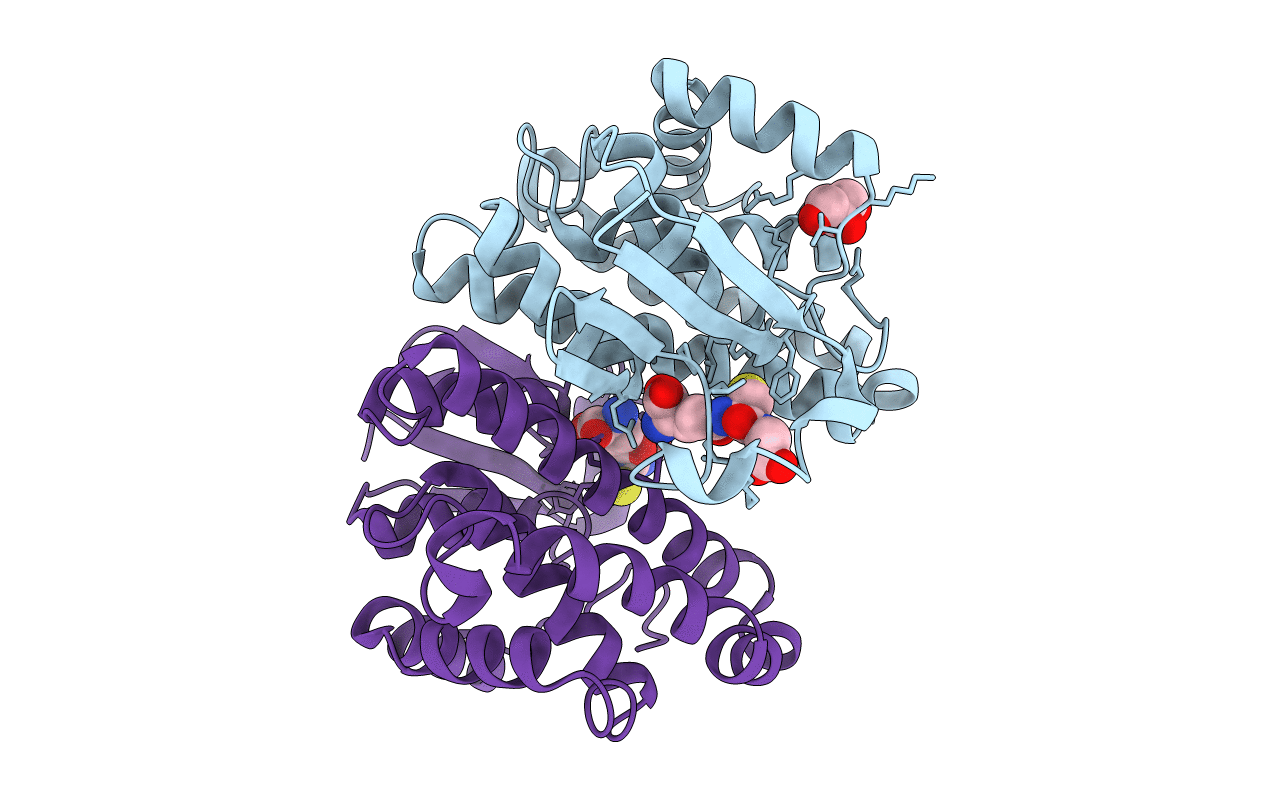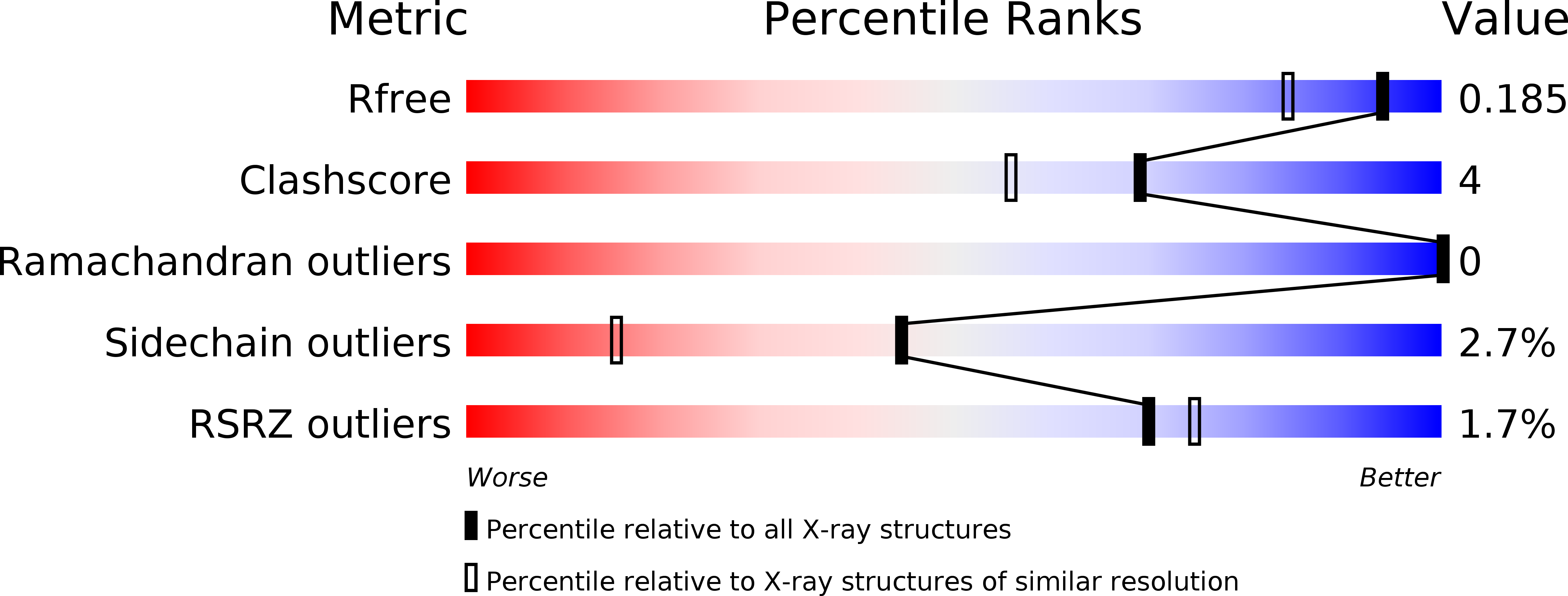
Deposition Date
2004-06-24
Release Date
2005-01-11
Last Version Date
2024-03-13
Entry Detail
PDB ID:
1TU7
Keywords:
Title:
Structure of Onchocerca Volvulus Pi-class Glutathione S-transferase
Biological Source:
Source Organism:
Onchocerca volvulus (Taxon ID: 6282)
Host Organism:
Method Details:
Experimental Method:
Resolution:
1.50 Å
R-Value Free:
0.18
R-Value Work:
0.15
R-Value Observed:
0.15
Space Group:
P 1 21 1


